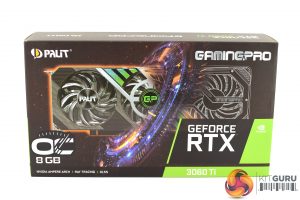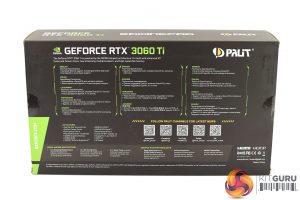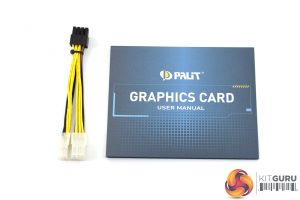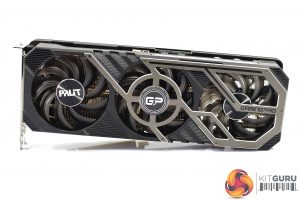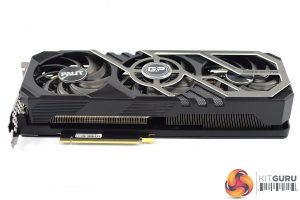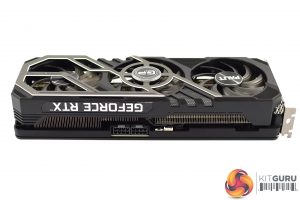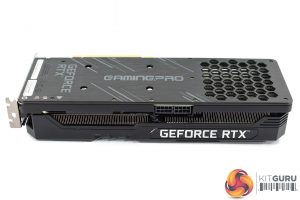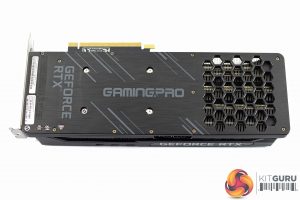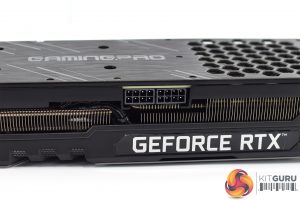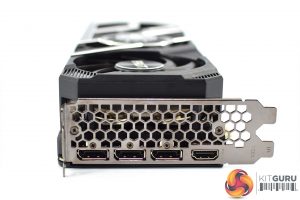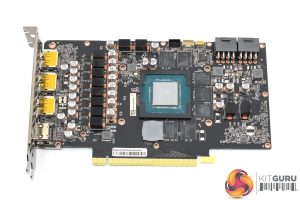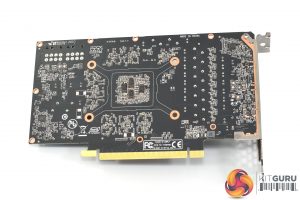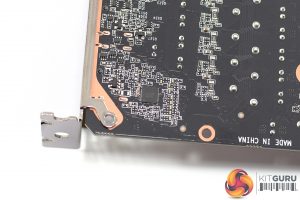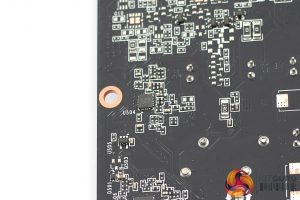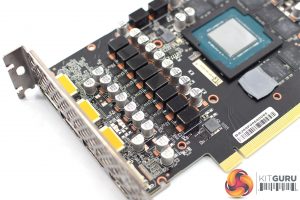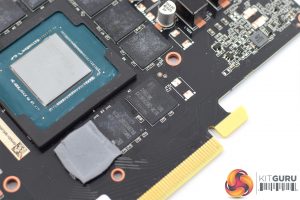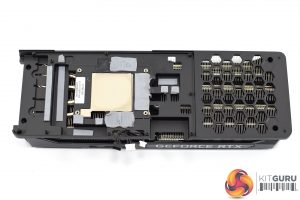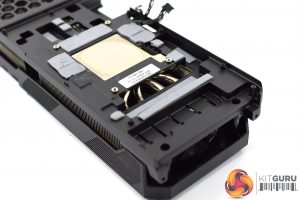The Palit RTX 3060 Ti GamingPro OC ships in a dark box, with an image of the graphics card visible on the front. On the back, some technical specifications are highlighted in different languages.
Inside, there's not much in the way of accessories, with just a user manual and a dual 6-pin to 8-pin power adaptor.
Looking at the card itself, yes it is using the same shroud design as the RTX 3080 GamingPro OC. This means it's made almost entirely of matte black plastic, but there is a metal grille that sits on top of the central and outer-most fan. This is screwed on top of the plastic and is purely for aesthetics.
It also uses the same triple-fan setup, with three 85mm fans that use semi-transparent fan blades. Personally, I don't think it is the best looking graphics card ever made, but I don't think it's ugly either, and it is certainly very colour-neutral.
By using the same shroud as the RTX 3080 model, this 3060 Ti GamingPro OC is relatively large for a GPU of this calibre. It measures 294 x 112 x 60 mm, so it is certainly quite long. Palit has ensured the height of the card is no taller than the PCIe bracket however, so it is a relatively narrow design.
The front side of the card is mostly left bare, with just the GeForce RTX branding printed in white text.
As for the backplate, this is the primary difference between the 3080 and 3060 Ti GamingPro OC models. Instead of a metal backplate, Palit has opted for plastic here, and I do find this disappointing – 3060 Ti isn't a budget GPU, and this is Palit's top of the line offering, so it doesn't sit too well with me that the company has ditched metal in favour of a plastic backplate. In my opinion, it doesn't look or feel as good, while it's also not going to help with any heat dissipation from the back of the PCB.
We can also see two 8-pin power connectors, which is more than enough for the 240W power target of this card, while display outputs consist of 3x DisplayPort 1.4a, and then 1x HDMI 2.1.
Looking now at the PCB, we can see Palit has opted for a 10-phase VRM for the GPU, using a UPI uP9512R controller. The memory VRM is 2-phase, using the UPI u1666Q controller.
Palit uses On Semi's NCP302150 MOSFETs for GPU power delivery, which are rated for 50 A, but Sinopower SM7342EKKP MOSFETs are used for the memory.
We can also note the use of Samsung GDDR6 memory modules, rated at 16Gbps.
Just like the RTX 3080 model, the heatsink is covered by a large die-cast aluminium alloy plate. This plate contacts with the memory chips as well as the VRM componentry. Under that plate, Palit uses two fin stacks, connected by 4x 6mm heatpipes, so this is two less than the 3080 GamingPro OC. The GPU die contacts with a separate baseplate, sitting above those four heatpipes.
 KitGuru KitGuru.net – Tech News | Hardware News | Hardware Reviews | IOS | Mobile | Gaming | Graphics Cards
KitGuru KitGuru.net – Tech News | Hardware News | Hardware Reviews | IOS | Mobile | Gaming | Graphics Cards


